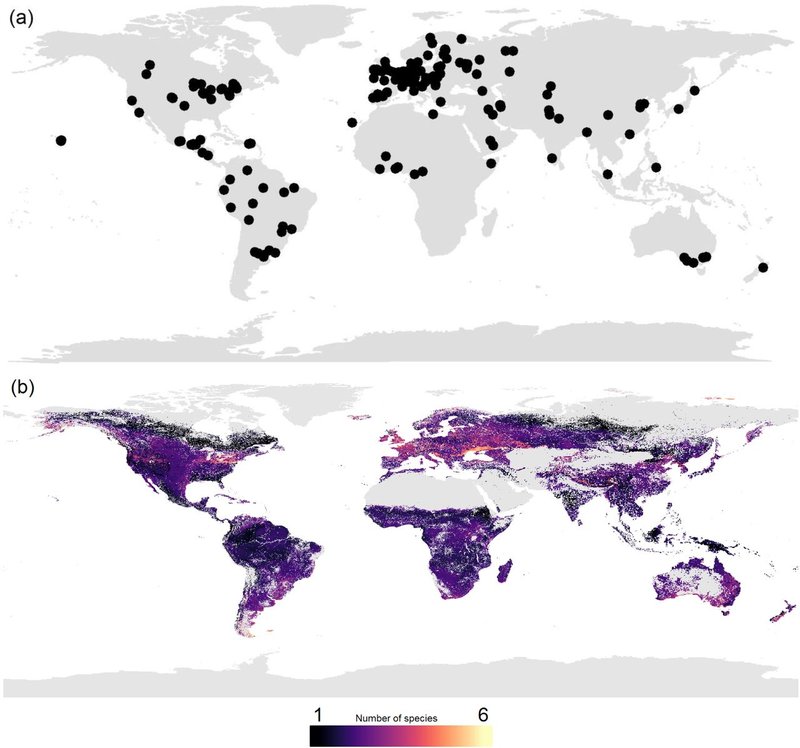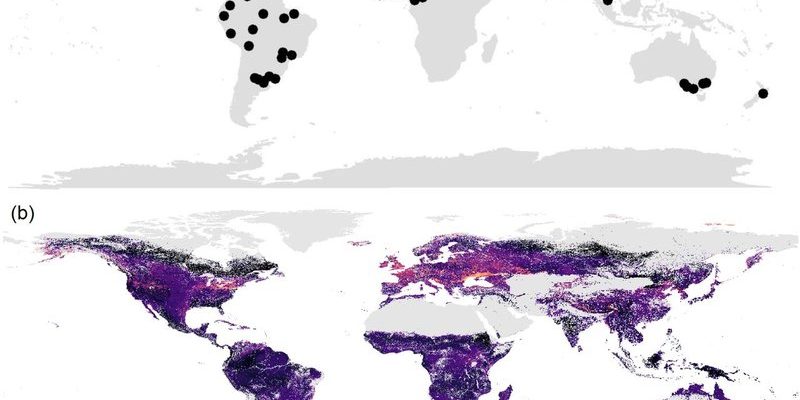
Understanding where velvet worms thrive helps scientists learn about biodiversity and ecosystems. It’s like creating a treasure map of life, showing where these little hunters exist and how they adapt to their environments. So grab a cup of coffee, and let’s explore the enchanting world of velvet worms and their habitats!
What Are Velvet Worms?
Let’s start at the beginning. Velvet worms belong to the phylum Onychophora and are often nicknamed “living fossils.” They have a soft, velvety texture (hence the name) and are covered in tiny scales. Think of them as the gentle giants of the invertebrate world, even though they can be only a few inches long. They have a segmented body with multiple pairs of stubby legs, and their ability to squirt a sticky slime is nothing short of impressive.
These creatures can be found in a variety of habitats, primarily in moist, tropical rainforests. They thrive in leaf litter, rotting logs, and other damp environments. Honestly, they’re like the ninjas of the forest floor, blending in with their surroundings while they stalk prey. They primarily eat small insects, using their slime to capture them, which makes them both unique and effective hunters!
But where exactly can you find these fascinating creatures? Let’s break it down continent by continent.
Distribution of Velvet Worms in North America
In North America, velvet worms are relatively rare compared to other regions. You might find them primarily in the eastern parts of the continent, particularly in moist, temperate forests. Their habitat is often under threat due to urban development and climate change, so spotting one can be quite a challenge.
Most velvet worm species in North America belong to the family Peripatidae. They are small, usually not more than a few inches long, and vary in color from brown to green. Many folks might be surprised to learn that these creatures prefer the cool, damp environments provided by old-growth forests or areas near streams and rivers.
Preserving these habitats is crucial for the survival of velvet worms. As stewards of the Earth, we can help by supporting conservation efforts and educating others about these unique creatures. Protecting their habitat not only ensures their survival but also the health of the entire ecosystem.
Distribution of Velvet Worms in South America
Moving south, South America is a hotspot for velvet worm diversity. Countries like Brazil, Colombia, and Ecuador provide a rich landscape for these creatures to thrive. Here, they flourish in the humid tropics, roaming the forest floors where moisture and shelter are abundant.
One fascinating aspect of South American velvet worms is their vibrant colors and varying sizes. Some can grow up to 10 inches long! They often live in leaf litter or under stones, blending in seamlessly with their surroundings. This adaptation helps them avoid predators and stay moist—key factors for their survival.
Research indicates that certain species in South America have very localized distributions. This means they can be found in specific areas with unique environmental conditions. For instance, certain species may favor the lush understory of the Amazon rainforest while others thrive in the drier, cooler Patagonian regions. This diversity showcases the importance of studying and protecting their habitats across different ecosystems.
Distribution of Velvet Worms in Africa
On the African continent, velvet worms are primarily located in the eastern and southern regions. Countries like Madagascar and South Africa are home to several unique species. In these regions, velvet worms can be found in moist forests and grasslands, often seeking refuge in leaf litter or under stones.
What’s interesting is that Madagascar hosts some of the most unique species of velvet worms. Due to its isolation, the island has developed a range of distinct wildlife, contributing to the biodiversity of these creatures. Here’s the thing: as habitats change due to deforestation and climate fluctuations, understanding and documenting these distributions becomes even more critical.
Since velvet worms play a role in the ecosystem as predators, their presence affects the populations of insects and other small creatures. Protecting their habitats not only helps them thrive but also maintains the balance of the entire ecosystem.
Distribution of Velvet Worms in Asia
In Asia, velvet worms have been documented primarily in the tropical forests of Malaysia and Indonesia. These regions provide ideal conditions with high humidity and abundant leaf litter. The diversity of these creatures in Asia is still not fully understood, but what we do know is that they adapt well to the moist environments provided by rainforests.
Here, velvet worms can vary in size and color just like their South American cousins. They tend to thrive in dark, damp places where they can hunt insects effectively. The lush, rich forests of Southeast Asia offer a vibrant home for these unique invertebrates.
Many species are still being discovered in this region, underscoring the importance of ongoing research and conservation efforts. Protecting these forests ensures that we keep discovering more about velvet worms and their unique adaptations.
Distribution of Velvet Worms in Australia
Australia is home to a range of velvet worms, found mainly in the eastern coastal regions. The unique climates and ecosystems make it an excellent habitat for these creatures. They can often be spotted in rainforests and temperate forests, where moisture levels are favorable.
One amazing aspect of Australian velvet worms is their ability to thrive in diverse environments, from dense rainforests to coastal areas. Australia’s rich biodiversity means that these creatures have adapted to survive in various micro-habitats, showcasing their resilience.
However, much like in other regions, the habitats of velvet worms in Australia face threats from urbanization and climate change. It’s essential to raise awareness about these creatures and promote conservation efforts to safeguard their future.
Conservation Efforts and Future Research
Understanding the distribution of velvet worms is crucial for their conservation. As scientists continue to study these creatures, they gain insights into their behavior, ecology, and the effects of environmental changes. Conservation efforts are essential, especially as many habitats are threatened by logging, agriculture, and climate change.
Here’s where you can help! Supporting conservation organizations dedicated to preserving unique ecosystems can make a real difference. Whether through donations or volunteer work, every little effort counts.
Future research on velvet worms can also uncover more about their biology and ecology. Learning how they interact with other species and their environments can lead to more effective conservation strategies. By expanding our understanding of their distributions, we can help ensure that these remarkable creatures continue to thrive in their natural habitats.
Velvet worms are true wonders of nature, with their unique adaptations and fascinating lifestyles. They may be small, but their role in the ecosystem is significant. By exploring their distribution across continents, we gain valuable insights into biodiversity and the importance of conservation.
Remember, the next time you hear about velvet worms, think of them as the stealthy ninjas of the forest floor, quietly doing their part in the intricate web of life. Let’s work collectively to protect their habitats, so future generations can marvel at these incredible creatures.

